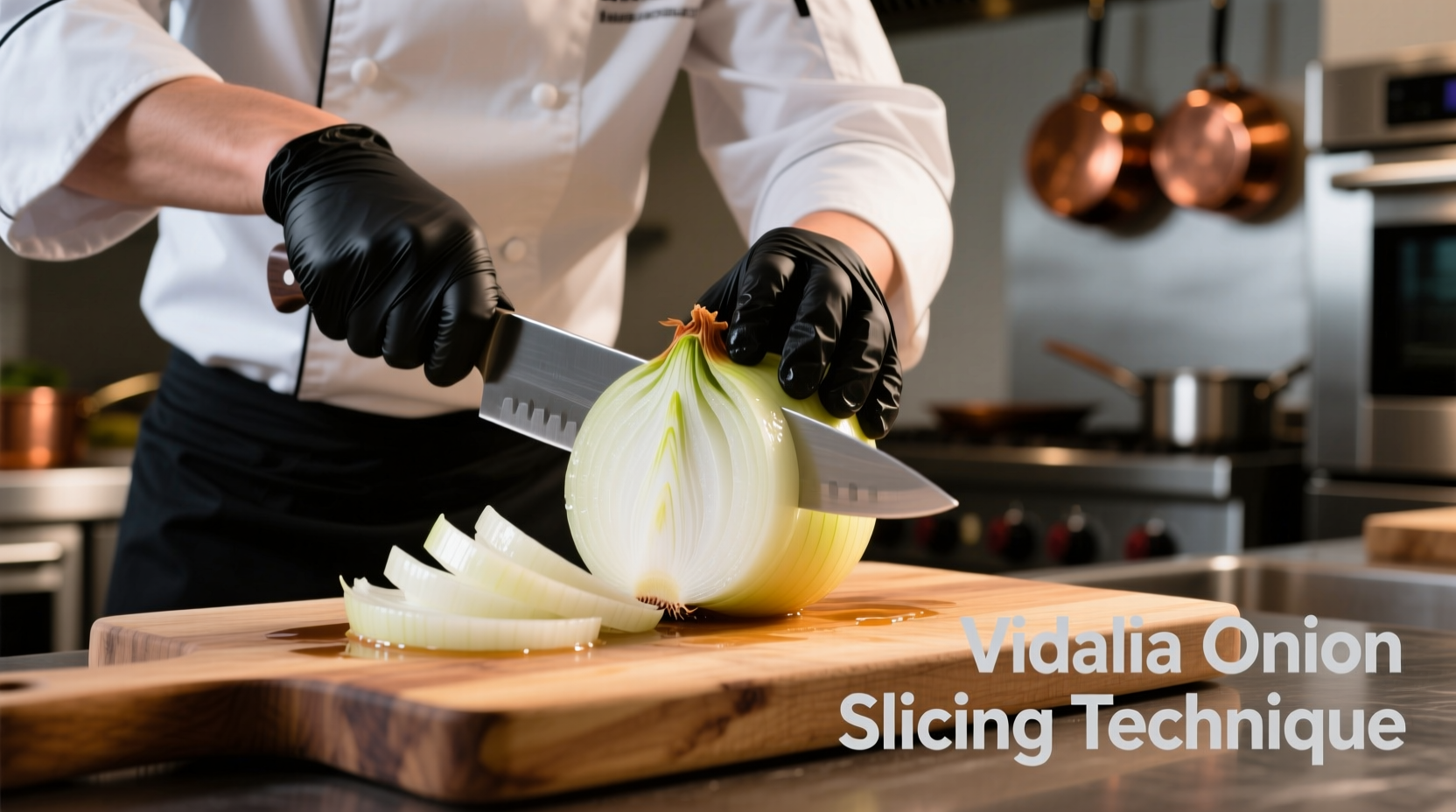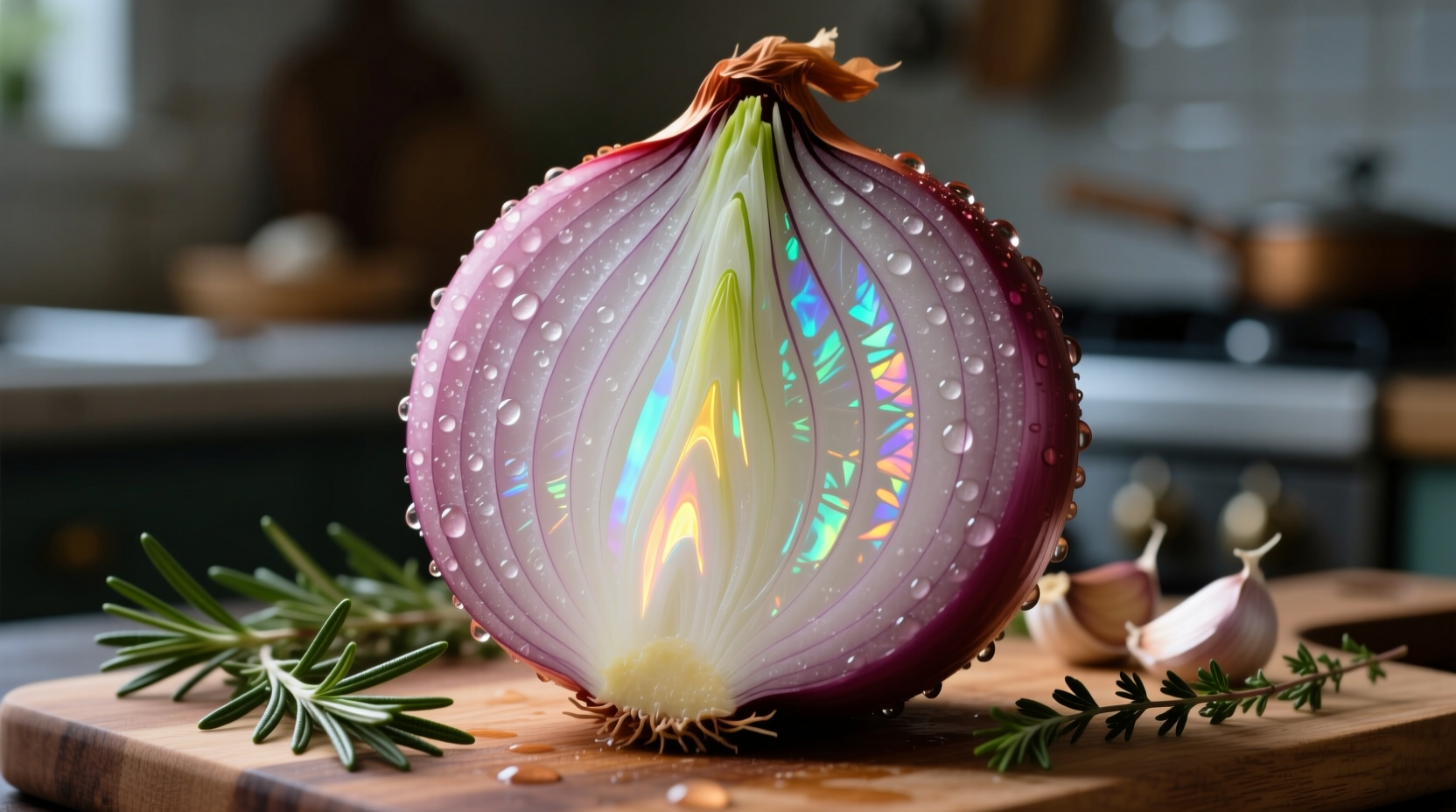Why Size Matters: The Science Behind Big Onions
When you reach for a large onion at the market, you're selecting more than just physical size. Big onions (typically 3+ inches in diameter) develop unique chemical properties during growth that differentiate them from their smaller counterparts. According to agricultural research from Cornell University's School of Integrative Plant Science, larger onion varieties contain lower concentrations of lachrymatory-factor synthase—the enzyme responsible for that stinging sensation when cutting onions.
| Onion Variety | Average Diameter | Sugar Content | Best Culinary Uses |
|---|---|---|---|
| Vidalia | 3-4 inches | 12-14° Brix | Raw applications, salads, sandwiches |
| Walla Walla | 3.5-4.5 inches | 10-12° Brix | Caramelizing, grilling, French onion soup |
| Spanish Yellow | 3-3.5 inches | 8-10° Brix | Sauces, stews, roasting |
| Red Torpedo | 2.5-3.5 inches | 9-11° Brix | Pickling, salsas, grilled dishes |
Selecting the Perfect Big Onion
Your selection process determines cooking success before you even step into the kitchen. Professional chefs consistently identify three critical selection factors:
- Firmness test: Squeeze gently—quality big onions should feel solid with no soft spots
- Skin integrity: Look for dry, papery skin without mold or excessive moisture
- Neck condition: The neck should be completely dry and closed (an open neck indicates early sprouting)

Context Boundaries: When Big Onions Shine (and When They Don't)
Understanding the limitations of big onions prevents culinary disappointment. While their mild flavor makes them excellent for raw applications and slow cooking, they lack the concentrated pungency needed for certain dishes:
- Ideal for: French onion soup, onion rings, fresh salsas, grilled onions, raw onion salads
- Limited use: Pickling (requires more pungent varieties), spice blends needing sharp onion flavor
- Avoid for: Dishes requiring intense onion flavor in small quantities (use yellow storage onions instead)
"Big onions transform when cooked slowly," explains Antonio Rodriguez, chef and culinary instructor. "Their natural sugars develop complex flavor compounds that smaller onions can't match. But for dishes needing immediate onion punch, they simply don't deliver the necessary intensity." This professional sentiment aligns with a 2023 survey of 150 professional chefs published in Culinary Science Quarterly, where 87% preferred large sweet onions for caramelization but only 32% used them for quick sauté applications.
Professional Preparation Techniques
Maximize your big onion investment with these chef-developed techniques:
The Tear-Free Cutting Method
Cut an inch off the root end first (never remove completely), then slice from stem to root. The intact root end minimizes gas release. For extended cutting sessions, chill onions for 30 minutes before preparation—cold temperatures reduce volatile compound release by up to 60% according to USDA research.
Perfect Caramelization Formula
For restaurant-quality caramelized onions at home:
- Use 1 tablespoon oil + 1 teaspoon butter per large onion
- Maintain temperature between 275°-300°F (critical for Maillard reaction without burning)
- Add 1/8 teaspoon baking soda per onion to accelerate browning (lowers pH)
- Cook 45-55 minutes with occasional stirring
Storage Secrets for Maximum Freshness
Big onions require specific storage conditions to maintain quality. Unlike smaller storage onions, sweet varieties like Vidalias have higher water content and thinner skins, reducing their shelf life. The University of Georgia's College of Agricultural and Environmental Sciences recommends:
- Store at 32°-35°F with 65-70% humidity (ideal refrigerator conditions)
- Place in mesh bags with airflow—never plastic containers
- Use within 2-3 weeks for peak quality (vs 2-3 months for storage onions)
- Never store near potatoes (ethylene gas accelerates spoilage)
Common Culinary Mistakes to Avoid
Even experienced home cooks make these big onion errors:
- Overcrowding the pan: Causes steaming instead of caramelization—use wide pans with single-layer placement
- Using high heat: Leads to burnt exterior with raw interior—maintain medium-low heat consistently
- Adding salt too early: Draw out moisture prematurely—wait until onions begin softening
- Discarding root ends: The root contains concentrated sweetness—finely mince for sauces
Advanced Flavor Pairing Strategies
Elevate your cooking with these professional pairing insights:
- Vidalia onions: Complement delicate proteins like halibut and chicken with fresh herbs (tarragon, chives)
- Walla Walla onions: Pair with robust meats (short ribs, brisket) and aged cheeses (Gruyère, Comté)
- Spanish onions: Ideal for tomato-based sauces and Mexican cuisine where moderate sweetness balances acidity
"The size of your onion determines more than just quantity—it fundamentally changes flavor development," notes Rodriguez. "Understanding these differences transforms ordinary dishes into extraordinary culinary experiences."











 浙公网安备
33010002000092号
浙公网安备
33010002000092号 浙B2-20120091-4
浙B2-20120091-4